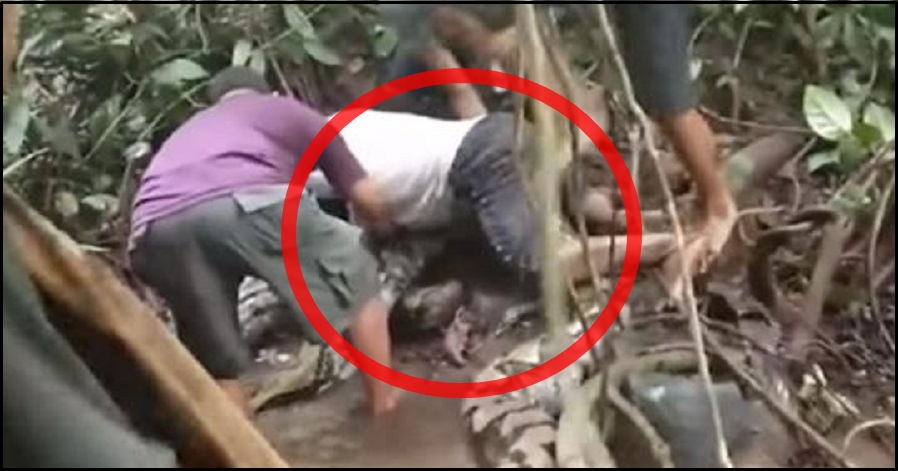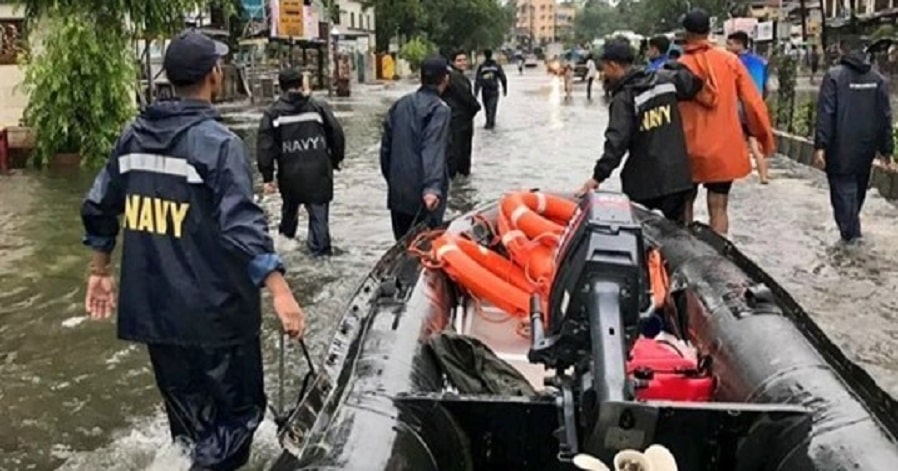No products in the cart.
Indian Army cared for the Society and set a great example, let’s Salute our heroes
If you think our Jawans only stand on the border and fight the enemies, think twice. Indian Army has been dominating in sports and other activities. However, we hardly notice other jobs done by them. When a cricketer hits a six or claims a wicket, we jump high in excitement and update the status on social media for likes and make memes on them.
Well, there is a subtle difference between playing for the nation and dying to protect the nation. Cricketers do the former and soldiers the latter. When soldiers give absolutely everything to protect us like a shield, they deserve our praise. Let’s pay due respect to the soldiers who live and die for the nation.
Let’s take a glimpse of several instances when the Indian army cared for the nation:
Indian army soldiers carry a pregnant woman for 5 km on a stretcher to a hospital
Our Army Jawans hit the headlines for all the right reasons. In yet another humanitarian effort, our army jawans deftly carried a pregnant woman on a stretcher to a hospital that is located five kilometres away from her village in Chhattisgarh.
In a village, it’s not that easy for a person to go to a hospital in case of an emergency situation. How often have we seen pregnant ladies losing their lives after failing to reach the hospital on time? Credits to the 41st Battalion of the Indo-Tibetian Border Police.
Efforts like these make us salute you. Your actions speak huge volumes and we shall forever be indebted to you for the services you carry out for the nation.
Heavy downpour and waterlogging affected normal life in the village and due to this reason, the ambulance couldn’t reach the 30-year-old Sahdai’s residence. It was the time when the jawans came to the rescue at the right time.
As per the reports, ITBP Post Commander AC Laxmikani and his men carried the patient on a stretcher for around five kilometres, after which an ambulance was called. She was then admitted to a Primary Health Centre (PHC) in Mardapal with immediate effect.
ITBP’s Twitter handle received immense praises online as they restored faith in humanity. Many have advised the government to offer better infrastructure in remote areas.
“Another humanitarian effort by ITBP. A pregnant women Smt Sahdai of Hadeli village with labour pain evacuated on a stretcher by 41 Battalion in Distt Kondagaon in Chhattisgarh. Hadeli and Ranapal COBs jointly carried the lady on a stretcher for 5 KMs to take her to PHC Mardapal,” the caption read.
Indian Army builds a new Safety System that will disable any attempts at Drunk and Driving
Drunken driving is one of the main causes of accidents across the world. Though there have been several awareness drives, there hasn’t been any change. Now, technology has been brought in to curb the practice of drunk and drive, especially within the Indian Army.
Captain Onkar Kale of the Indian Army and his team built a safety system for the Indian Army trucks that will disable any attempts at drunk driving in these vehicles. The Integrated Vehicle Safety System will not let any driver start these trucks if the driver has consumed alcohol or even if the driver is not wearing a seat belt.
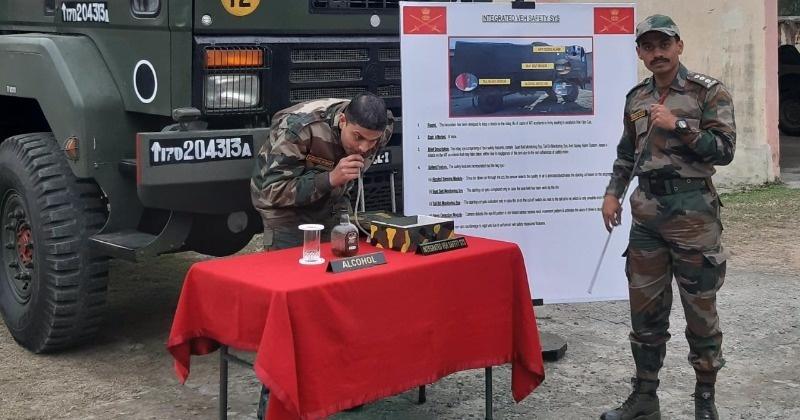
The actual purpose of the creation of such a system is to discourage driving under the influence of alcohol and to avoid road accidents in the force. A recent tweet by news agency ANI shows two officers from the team showing the use of the newly developed technology. If found to be a viable solution, this can be a great step to prevent the practice of drink and drive.
Such types of devices are quite commonly used in many countries. It is known as Ignition Interlocks and it is used in the US, Canada, Australia, Austria, Belgium, New Zealand and some other countries.
Indian Army builds road out of plastic to end plastic pollution crisis
Plastic waste generation in our nation is a big threat to the environment. Indian Army’s Military Engineer Services is now undertaking a pilot project at Narangi Military Station for road construction making use of plastic as partial substitute to bitumen. It has been said that 1.24 MT of waste plastic has been used to construct a road using technology.
India is the fifteenth biggest plastic waste producer globally as it produces a whopping 25,940 tonnes of plastic waste daily. “The production of plastic in India increased from 1,591 million metric tonnes in 2014-15 to 1,719 million metric tonnes in 2017-18.
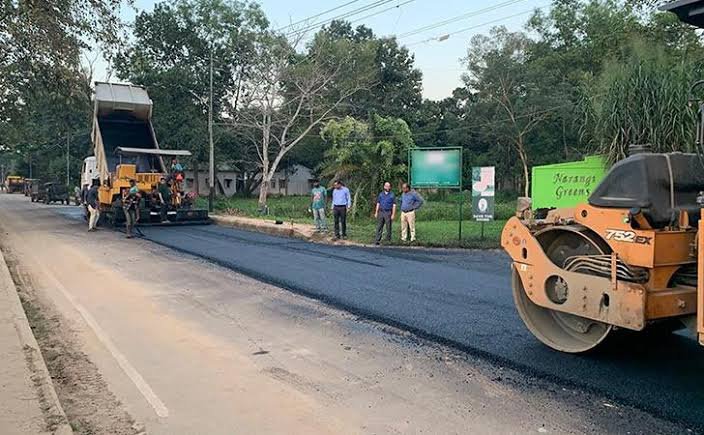
However, the production for 2018-19 is 1,589 million metric tonnes,” Union Minister of State for the environment ministry, Babul Supriyo said, quoting a government report released this year.
Army Major develops bullet-proof jacket for ‘full body protection’ from Sniper rifle attacks
India have already started exporting bulletproof jackets according to its own standards, which comply with international norms, to over 100 nations, including European nations, as per Bureau of Indian Standards (BIS).
A top BIS official on the condition of anonymity highlighted that India is the fourth country after the likes of US, UK and Germany to have its own national standard on bulletproof jacket which offers 360-degree protection. This is seen as a strong step towards preventing Pakistani sniper attacks on Indian soldiers.
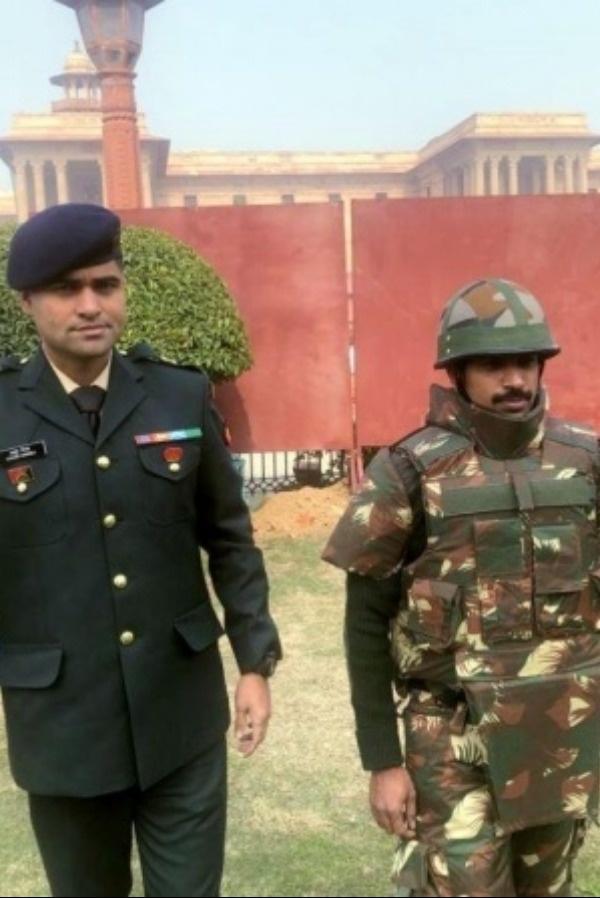
The Bureau of Indian Standards is a national body that sets quality norms for many products and services. It has set more than 20,000 standards so far. It is worth mentioning here that India is the fourth nation in the world to have its own national standards on this product.
Meanwhile, an Indian Army officer by the name of Major Anoop Mishra has developed a new bullet-proof jacket which can offer protection to soldiers from deadly sniper rifle bullets. Major Anoop Mishra has named the bullet-proof jacket as ‘Sarvatra’ which can provide protection to troops from lethal sniper rifle bullets.
Major Anoop Mishra told news agency ANI that his team has developed the level four bullet-proof jacket that offers complete body protection against sniper rifle bullets. “We have developed the level four bullet-proof jacket that has been developed at the College of Military Engineering in Pune and can provide full-body protection against sniper rifle bullets,” he added in a statement.
For this creation, he was awarded Army Design Bureau Excellence Award by Army Chief General Bipin Rawat at the Army Technology Seminar. What stands out in his creation is that the bullet failed to penetrate through the jacket.
“During one operation, I was hit by a stray bullet on my bulletproof jacket. The bullet was not able to penetrate but the trauma was a bit more than what I could have taken. So I decided on that day that I will be making my own bulletproof jacket which will be reducing the trauma which is transferred to the body,” he told ANI.
When asked about the need to develop this bullet-proof jacket, Mishra said that following the sniper attacks on the Line of Control and Kashmir valley, there was a need for ‘full-body protection for the Indian soldiers’.
He went on to add saying that the jacket has already been experimented by the Infantry at the test facilities. These precious jackets will be produced by one of the selected Indian defence industry partners and Indian Army is expected to give a tender for these full-body protection bullet-proof jackets.
Indian army makes World Record, builds the longest bridge over Indus river in just 40 days
Indian Army hit the headlines for all the right reasons and once again they proved that they are amongst the strongest and intelligent forces of the world. The soldiers have done something great which soldiers of other countries would only dream of. Indian Army built the longest suspension bridge over the Indus River at Choglamsar village in Leg, Ladakh.
The bridge was inaugurated by War Veterans of the region on April 1, marks the 20th anniversary of Kargil Vijay Diwas. The cable suspension bridge, named Maitri is 260-feet long was constructed by the combat engineers of the ‘Fire and Fury Corps of the Indian Army’ and that too in a time of 40 days, which is indeed a world record.
The purpose of constructing the bridge is to help residents of Choglamsar, Stok and Chuchot villages which are the largest areas in Ladakh.
Pictures of the inauguration ceremony of the bridge were posted by the official Twitter handle of ADG- PI (Additional Directorate General of Public Information). “Suspension Bridge constructed over Indus River by Combat Engineers ‘Fire & Fury Corps’ (Sahas aur Yogyata Regiment) was inaugurated by local War Veterans of the region on 1 April 2019. Built in a record time of 40 days ‘Maitri Bridge’ is the longest Suspension Bridge over River Indus,” read the tweet.
Netizens praised the Indian Army for building the longest suspension bridge over Indus river.
Indian Army builds 40-foot bridge made from fallen trees in flood-hit Kerala
Kerala citizens ran through their worst flood disaster since 1924. Heavy showers kept continuing for days and in the process, waterlogging paralysed normal life. The severe effects of monsoon were witnessed when 40 people died due to the flash flood.
Not just that over 20,000 houses were damaged and the state experienced a total loss of Rs. 8,316 crore. Nearly 10,000 km of the state roads have also been damaged due to this flash flood.
Due to this natural disaster, people got affected very badly. One such district that got badly affected due to the flash flood and landslide was Idukki. However, the state saw real heroes emerge as saviours for the victims. Credits to the Indian army for showing an extraordinary tale of bravery once again.
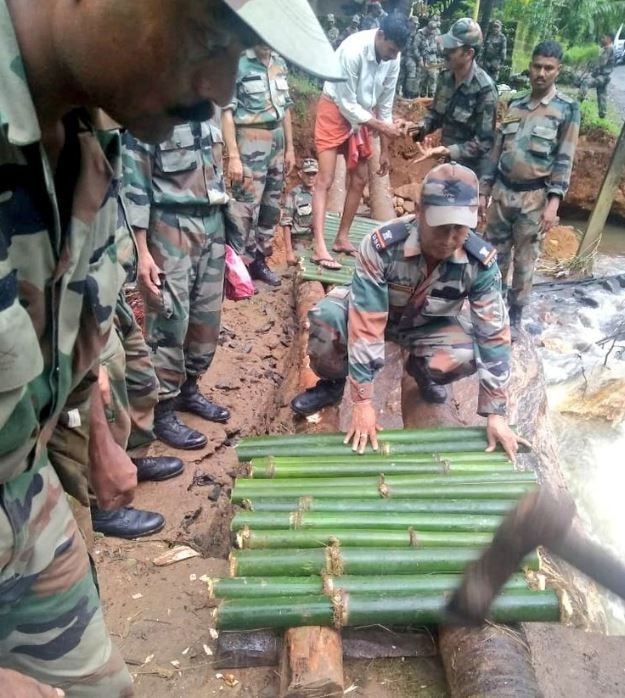
Without even caring for their own life, they sprung into action to give a helping hand to the sufferers. Without sleeping, the army stepped forward to evacuate the unfortunate ones from isolated places, constructing temporary bridges, repairing and clearing roads on the outskirts of Kerala. This sums up the essential Indian army for you!
Army’s Engineer Task Force came up with a decisive plan to build a long bridge so that people can easily go to the other side safely, so a 40-foot bridge was built in Malappuram district and personnel used available things to good effect and bolstered the bridge which was severely hit by floodwater.
In another scenario, the Army constructed a makeshift bridge using fallen trees in Wayanad to rescue as many as 800 stranded people.





